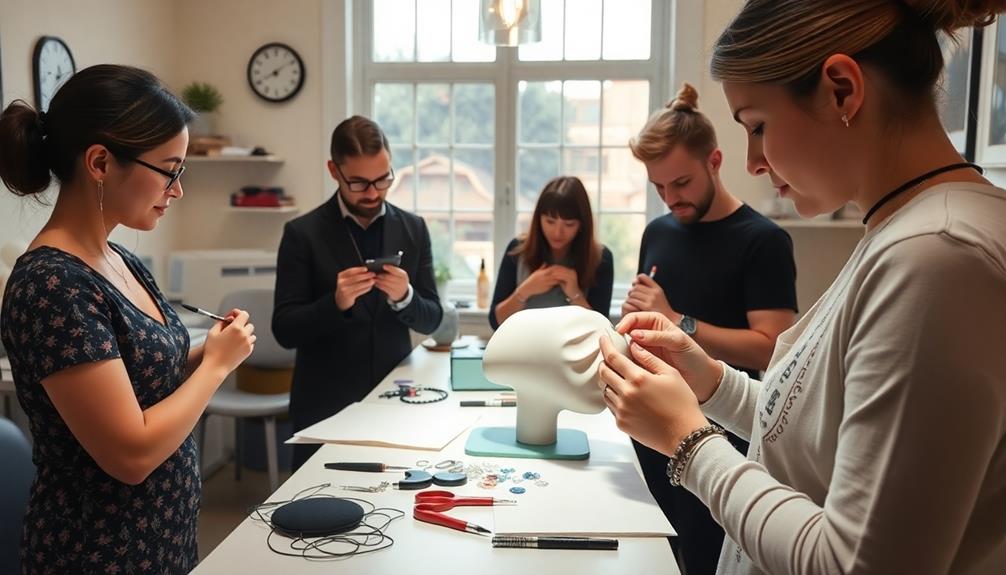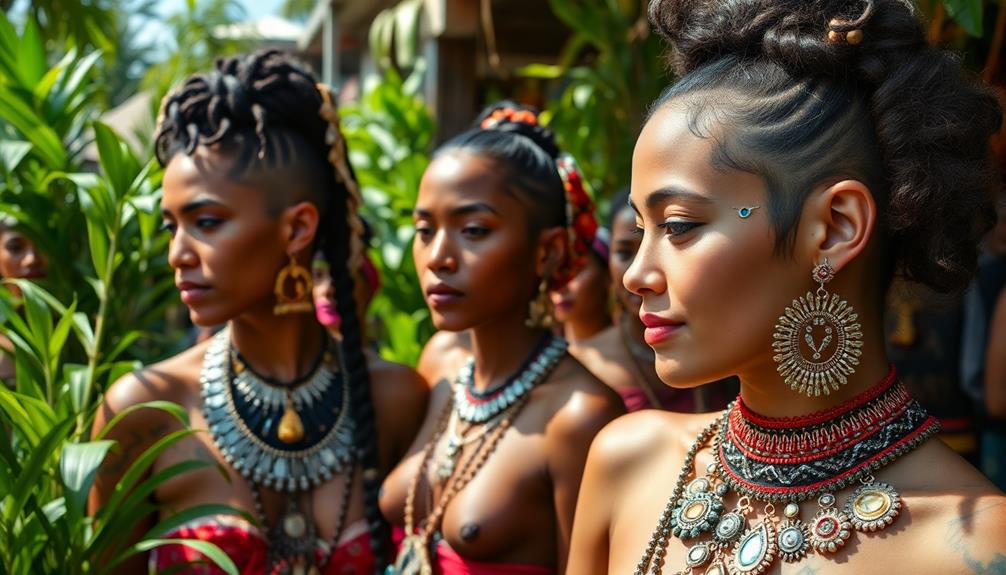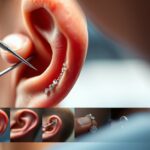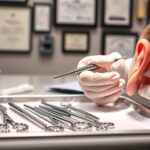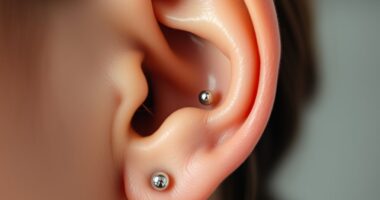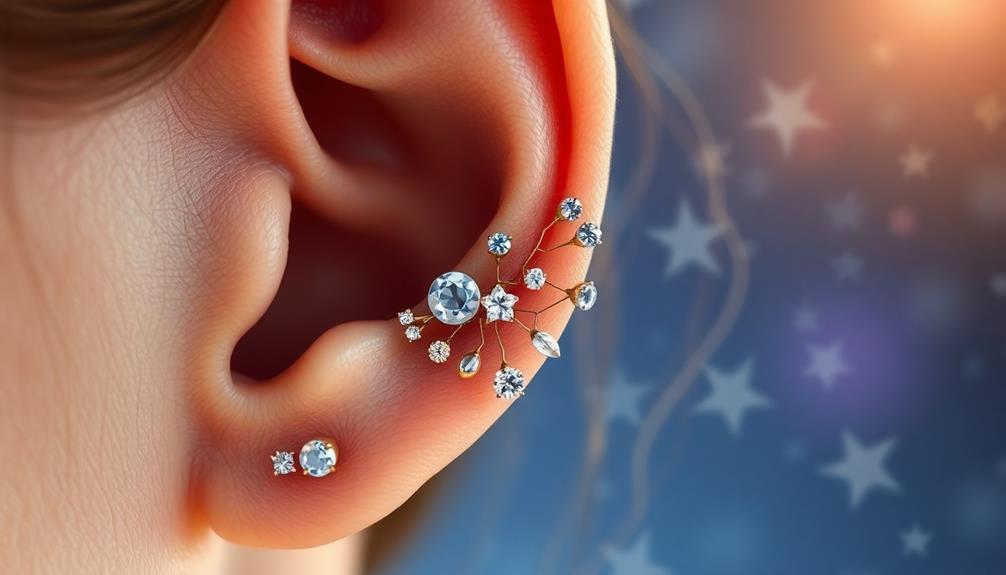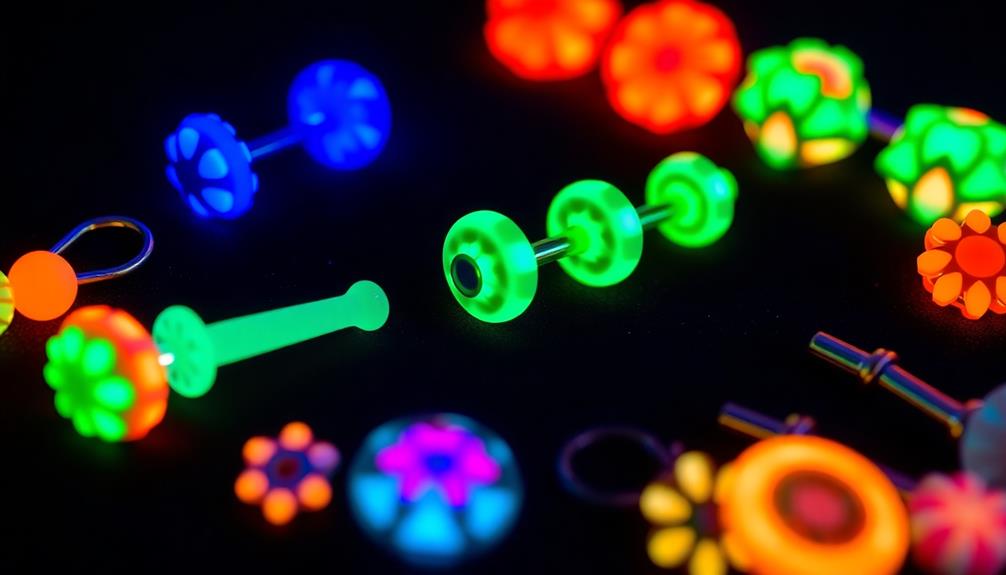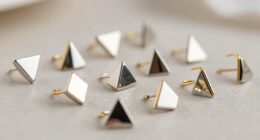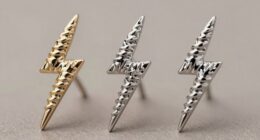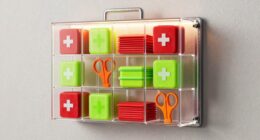To kickstart your career in the booming body piercing industry, consider enrolling in a quality apprenticeship program, which typically lasts one to three years. You'll receive hands-on training under experienced mentors, learning essential skills like hygiene, client communication, and anatomy understanding. Make sure to plan your finances as apprenticeships often bring limited income. Building a professional network through conventions and online platforms will also prove beneficial. By focusing on ongoing education and real-world experience, you can set yourself up for success. There's more to explore about different pathways and opportunities waiting for you.
Key Takeaways
- Engaging in a quality piercing apprenticeship provides essential hands-on training and mentorship under experienced professionals for career success.
- Strong interpersonal skills and knowledge of hygiene practices are crucial for effective client interactions and ensuring safety during procedures.
- Financial planning is vital during apprenticeships due to limited income; consider alternative income sources to maintain stability.
- Building a professional network through conventions, online forums, and social media enhances opportunities for mentorship and job placement.
- Continuous education and specialization in body piercing or related fields can lead to diverse career opportunities and entrepreneurial ventures.
Understanding the Piercing Industry
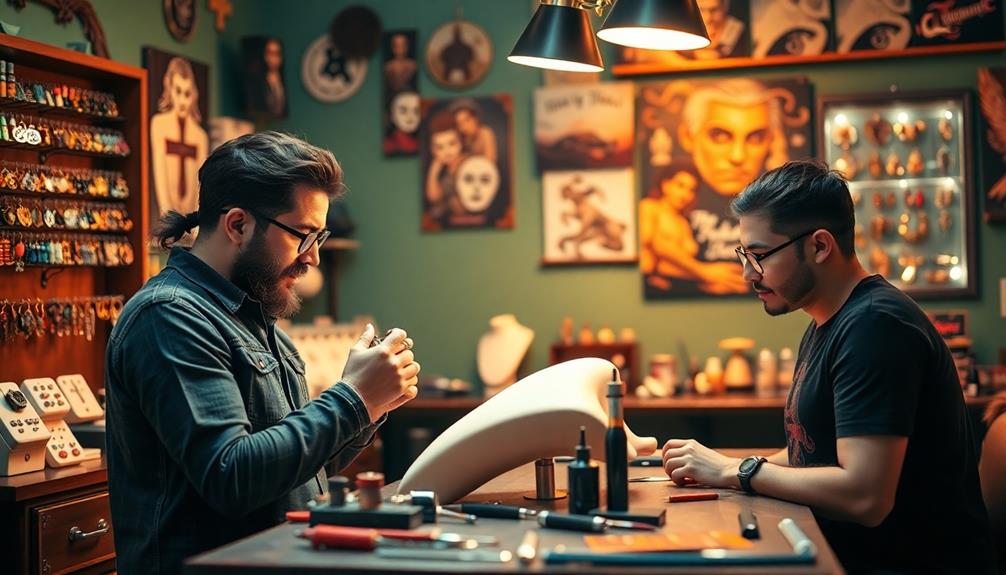
What does it take to thrive in the body piercing industry? First, you need to understand that this field isn't just about aesthetics; it's a booming sector worth over $1 billion annually in the U.S. To succeed, you'll require a solid foundation in hygiene and sterilization practices. This knowledge is critical for preventing infections and ensuring client safety during each procedure.
Engaging in a piercing apprenticeship is your best step forward. Lasting between one to three years, these apprenticeships offer hands-on training under seasoned professionals. You'll learn not just the technical skills but also how to connect with diverse clients and understand their motivations for body piercing, whether cultural or aesthetic.
Moreover, the body piercing industry is ever-evolving. Staying current with new techniques, trends, and safety protocols is essential. Ongoing education will keep your skills sharp and your practice safe and professional.
Importance of Quality Apprenticeships
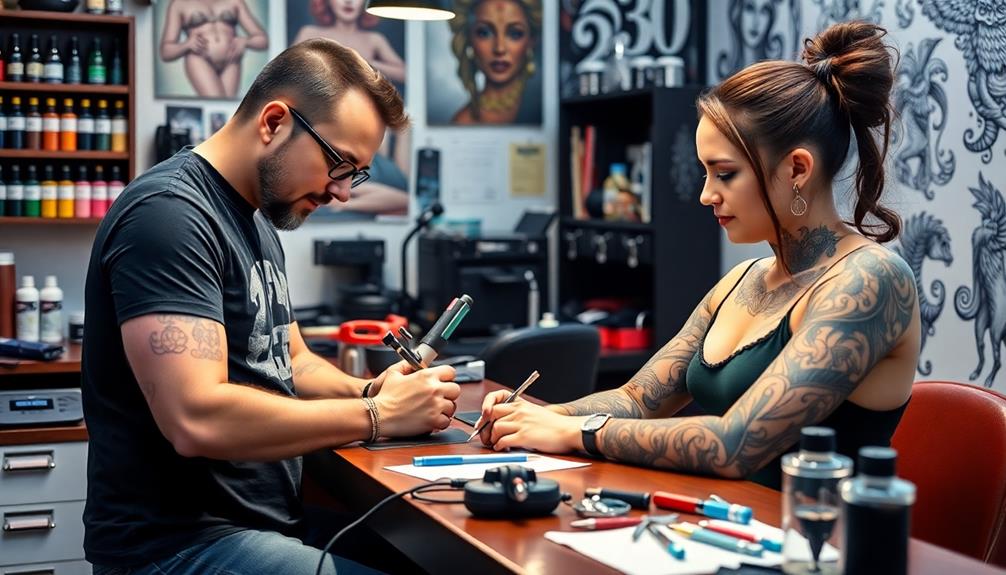
In the world of body piercing, the importance of quality apprenticeships can't be overstated. A solid apprenticeship is your gateway to becoming a skilled piercer, providing essential hands-on training under experienced mentors. These programs typically last between one to two years, requiring at least 1200 hours of documented mentorship.
You'll need to observe 100 procedures and perform at least 50 piercings under supervision. This structure guarantees you develop the necessary skills effectively.
Furthermore, the Piercing Apprentices Bill of Rights safeguards your experience, ensuring a safe environment, coverage of training costs, and the right to decline untrained piercings. Finding a reputable mentor may take time, but it's vital for your growth.
A poor apprenticeship can hinder your skills and tarnish your reputation in the industry, while a quality one enhances both.
Additionally, these apprenticeships promote diversity by providing equitable access to training for individuals from various backgrounds, moving away from unpaid positions that often favor the privileged.
Financial Planning for Apprentices

Financial stability is vital when you're steering through an apprenticeship in body piercing, where income often comes in fits and starts. Since many apprenticeships provide little to no income, you'll need to obtain alternative sources of income to maintain your financial well-being.
It's key to engage in thorough financial planning to manage your expenses and prepare for any income fluctuations you may face. As a self-employed piercer, you won't benefit from paid sick days or vacation time, making it even more important to develop a solid financial strategy.
Track your income diligently and understand your tax obligations as an independent piercer to guarantee you're prepared for the financial responsibilities that come with this career.
Think about your future business plans during your apprenticeship. Preparing for the financial aspects of owning a business will set you up for successful piercing in the long run.
Additionally, remain adaptable to the economic landscape. Market trends can impact the demand for luxury services like body piercing, so stay alert and ready to adjust your financial plans accordingly. This proactive approach will help you navigate your apprenticeship and lead to a thriving career.
Essential Skills for Success
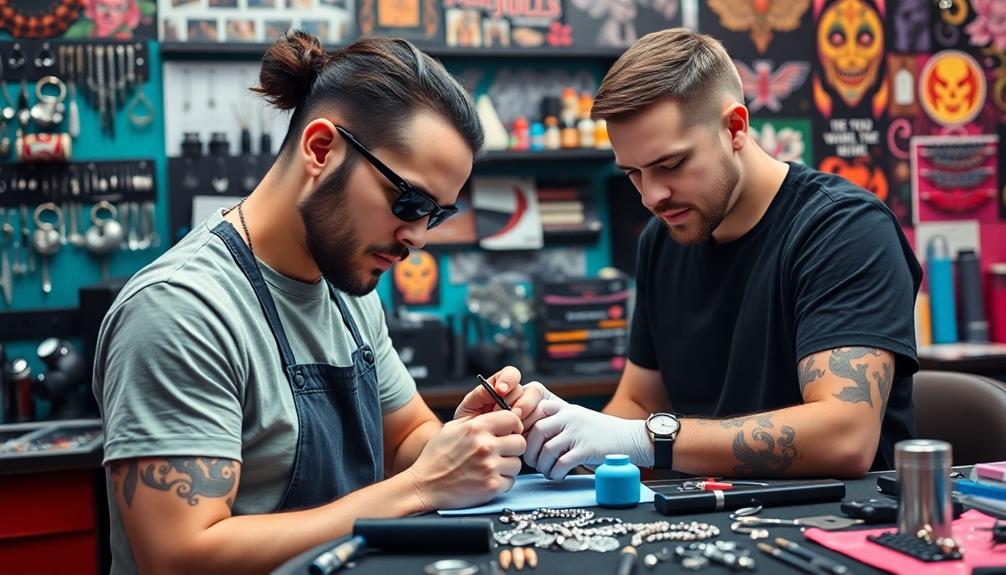
To thrive in a body piercing apprenticeship, you need a blend of essential skills that go beyond just technical know-how. Strong interpersonal skills are crucial for effective communication with clients. Building trust helps guarantee a comfortable piercing experience, which is vital for client satisfaction and return business.
Additionally, just as certain foods can be detrimental to dogs, understanding client health and allergies is important to avoid complications, similar to how grapes are toxic to dogs.
Proficiency in hygiene and sterilization practices is non-negotiable. You must understand health regulations and safety protocols to prevent infections and complications.
Knowledge of anatomy is equally important; knowing where to place jewelry minimizes risks and enhances the success of each piercing.
Continuous education and self-directed learning are necessary to keep up with new techniques, trends, and aftercare practices. The body piercing industry evolves frequently, so staying informed is key to your growth as a Body Piercer.
Lastly, attention to detail and organizational skills are essential. Maintaining a clean work environment and guaranteeing operational efficiency throughout the piercing process not only enhances safety but also reflects your professionalism.
Types of Apprenticeship Programs
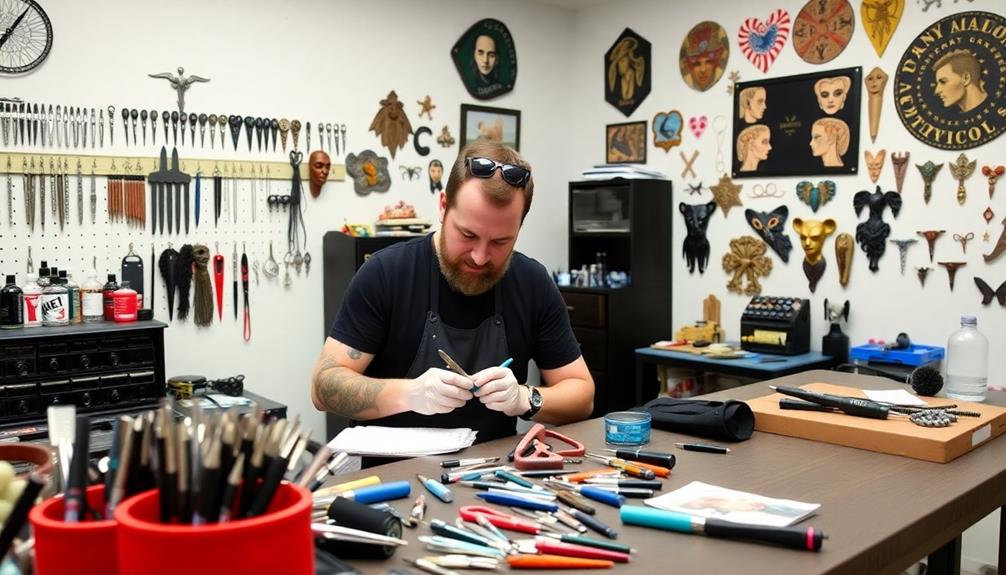
When exploring piercing apprenticeships, you'll encounter various types of programs that cater to different needs.
Employment-Linked programs often lead to sub-contracting opportunities, while Non-Compete arrangements might require you to relocate for training.
On-the-Job training offers hands-on experience with limited supervision, allowing you to learn directly from seasoned professionals.
Employment-Linked Programs
Employment-Linked apprenticeship programs serve as a solid foundation for aspiring piercers, seamlessly blending education with hands-on experience. If you're looking to become a piercer, these long-term arrangements often lead to subcontracting opportunities within the same studio, providing a structured pathway for career advancement.
Here's what you can expect from these programs:
- Training Hours: Most programs require you to complete at least 1200 hours of documented training, including observing piercing procedures and gaining hands-on experience under an experienced piercer.
- Real-World Practice: As you advance, you may start performing piercings at discounted rates for clients, which builds your skills and confidence in a practical setting.
- Mentorship: You'll receive guidance emphasizing cleanliness, safety regulations, and constructive feedback, essential for your growth.
- Brand Development: Successful completion often helps you cultivate a personal brand and create valuable networking opportunities, enhancing your future job prospects in the body piercing industry.
Non-Compete Arrangements
Non-compete arrangements in apprenticeship programs can greatly shape your career path as a piercer. These agreements restrict you from working in competing establishments within a specific geographical area after completing your training.
While they often provide structured mentorship and a clear learning environment, they can also limit your job options once your apprenticeship is over.
If you choose to enter a non-compete apprenticeship program, you might've to relocate, which can be a notable decision. This requirement can create barriers if you prefer to stay in your original market.
The emphasis on loyalty to your mentor's studio is strong, and these programs may involve longer training durations to align with the restrictions set by the agreement.
Before committing to an apprenticeship program with non-compete arrangements, it's essential to understand the implications fully.
These clauses can considerably impact your future career opportunities, so weigh the benefits against the limitations.
Make sure to ask questions and clarify any doubts to guarantee that the path you choose aligns with your long-term career goals in the piercing industry.
On-the-Job Training
On-the-job training apprenticeships in body piercing offer a hands-on approach that lets you dive right into the field. As a new piercer, you'll gain essential skills while working under limited supervision, allowing you to learn in a real-world environment.
Here's what you can expect from these programs:
- Hands-on Experience: You'll practice your skills by performing a specific number of piercings, often at discounted rates for clients, helping you build your portfolio.
- Hygiene Training: You'll engage in cleaning and sterilizing equipment, which emphasizes the critical importance of hygiene and safety in the piercing industry.
- Feedback Loop: Continuous feedback is key. Make sure to actively seek advice from your mentor to refine your techniques.
- Interpersonal Skills: Developing strong communication skills with clients can set you apart in the industry and enhance your overall effectiveness as a new piercer.
While on-the-job training mightn't have a structured curriculum, it provides invaluable experience.
Your success depends on your initiative and willingness to learn, so embrace every moment to grow in this exciting career!
Building a Professional Network
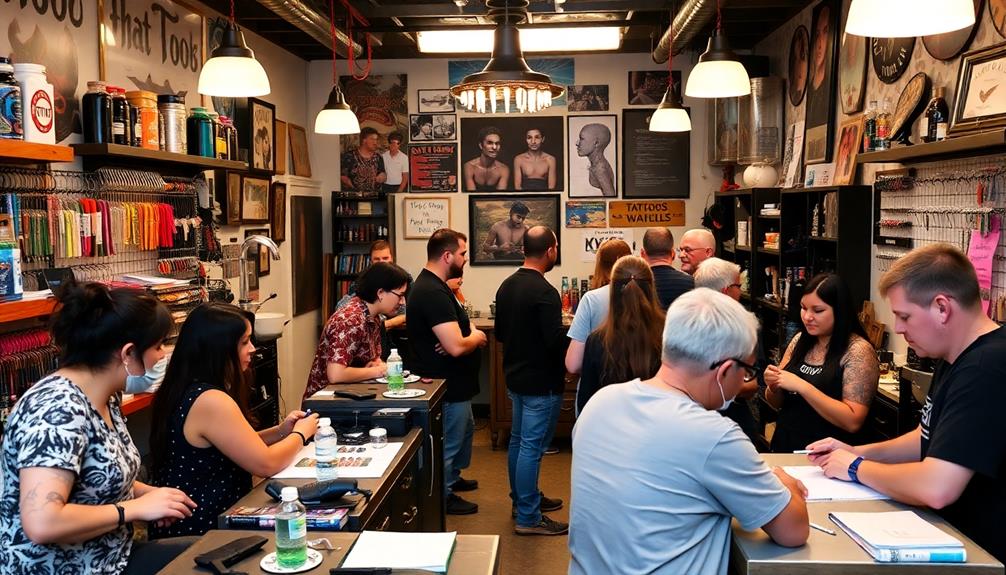
Building a professional network is essential for your success in the piercing industry.
By attending conventions and engaging in community events, you'll meet experienced piercers who can guide you on your journey.
Additionally, utilizing online platforms allows you to connect with peers and stay updated on industry trends.
Networking With Industry Professionals
A strong network can greatly boost your chances of landing a piercing apprenticeship. Connecting with industry professionals opens doors to mentorship and learning opportunities that can shape your career.
Here are some effective strategies to build your network:
- Attend Piercing Conventions: These events allow you to meet experienced professionals and learn about the latest trends and techniques in the industry.
- Join Online Forums: Participate in communities for piercers where you can seek advice, share experiences, and establish relationships with industry insiders.
- Volunteer at Body Art Events: Get hands-on experience while meeting established piercers. This can considerably enhance your visibility in the piercing community.
- Utilize Social Media: Showcase your work and engage with leaders in the field. Being active on platforms can attract attention and create valuable connections.
Don't forget to reach out directly to local piercing studios for potential apprenticeship openings.
Demonstrating your initiative can impress shop owners and potentially lead to mentorship opportunities, especially if they're members of the APP.
Start networking today, and watch your career possibilities expand!
Engaging in Community Events
Getting involved in community events is an excellent way to further expand your professional network in the piercing industry. Attending local body art conventions and trade shows can connect you with experienced piercers and industry professionals, potentially leading to mentorship or apprenticeship opportunities. Volunteering at community events, like charity piercing days or body art festivals, allows you to gain hands-on experience while building relationships within the local piercing community.
Here's a quick overview of how different community events can benefit your career:
| Type of Event | Benefits |
|---|---|
| Body Art Conventions | Network with established professionals |
| Charity Piercing Days | Gain experience while giving back |
| Workshops (e.g., APP) | Learn from experts, meet potential mentors |
| Community Outreach Programs | Build a positive reputation and visibility |
Engaging in these activities not only enhances your skills but also increases your exposure to potential mentors and clients, making it easier to navigate your path in the piercing industry. Remember, every connection counts!
Utilizing Online Platforms
Frequently utilizing online platforms can considerably enhance your professional network in the piercing industry. By actively engaging with these spaces, you can connect with seasoned professionals and discover valuable mentorship opportunities.
Here's how to make the most of your online presence:
- Join online forums: Participate in communities dedicated to body piercing. Share your experiences and learn from others to understand industry best practices.
- Utilize social media: Showcase your work on platforms like Instagram and Facebook. Building a personal brand can attract potential mentors and apprenticeship offers.
- Follow industry leaders: Keep up with established piercers on social media. Get inspired by their techniques and stay informed about workshops and events you can attend.
- Attend virtual workshops: Enhance your skills through online classes focused on body piercing. These sessions not only improve your abilities but also expand your professional network.
Future Career Opportunities
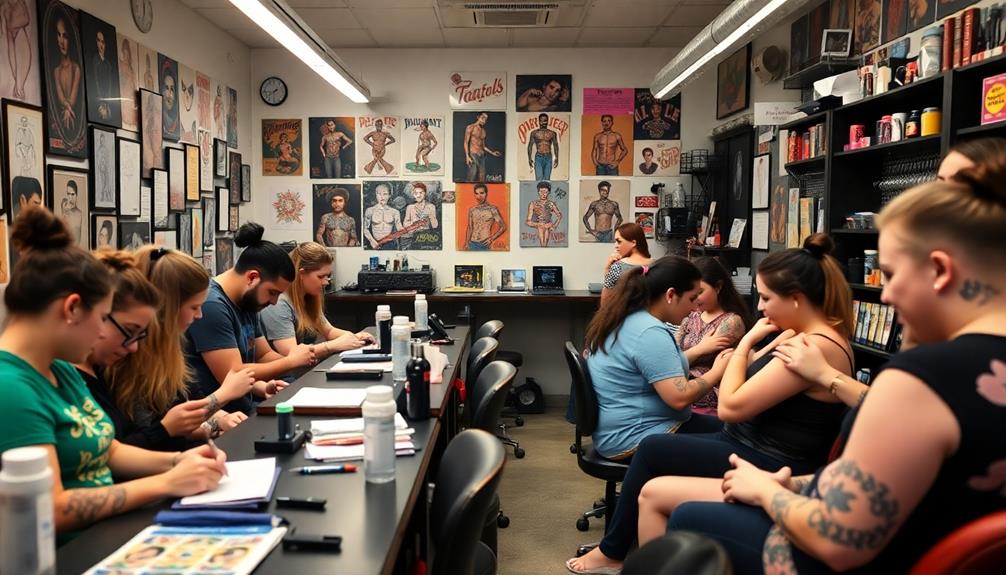
Exploring future career opportunities in the body piercing industry reveals a landscape rich with potential. With the market size exceeding $1 billion annually, you can tap into a thriving field that offers diverse paths.
Specializing in areas like tattooing or body modification not only boosts your marketability but also enhances your income potential.
If you're entrepreneurial, consider opening your own piercing studio. Establishing a personal brand can help you attract a loyal clientele. Providing high-quality aftercare instructions and fostering a positive client experience will set you apart in a competitive market.
To advance your career, continuous education is key. Participate in conventions and competitions to hone your skills and meet industry professionals.
Engaging with organizations like the Association of Professional Piercers (APP) can further enhance your career prospects by connecting you to valuable resources, mentorship, and community support.
Frequently Asked Questions
Do You Make Money as a Piercing Apprentice?
As a piercing apprentice, you typically won't make money right away. Most apprenticeships offer little to no income, so you'll need a secondary job to support yourself during your training and gain valuable experience.
Where Do Piercers Make the Most Money?
You'll make the most money as a piercer in urban areas, where high demand boosts client volume. Cities often offer better pricing and opportunities to increase income through jewelry sales and seasonal events.
How Much Money Can You Make Piercing?
You can make between $30,000 and $80,000 annually piercing, depending on your location and experience. Building a loyal clientele and selling jewelry can boost your income substantially, especially during peak fashion trends.
What Occupation Is a Piercer?
Did you know the body piercing industry exceeds $1 billion yearly in the U.S.? As a piercer, you create openings for jewelry, blending technical skills with customer service to guarantee clients' comfort and satisfaction during the process.
Conclusion
As you commence your journey in the piercing industry, remember that every needle you wield is a step toward your artistic destiny. Embrace the lessons from your apprenticeship like a sculptor chiseling away at marble, revealing the masterpiece within. With passion and perseverance, you'll weave connections that shine brighter than the jewelry you'll eventually craft. So, take a deep breath, plunge into this vibrant world, and let your creativity pierce through the ordinary, creating a future that's uniquely yours.

